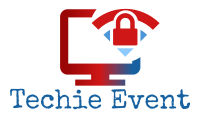Crafting a modern resume is an essential step in securing job opportunities in today’s competitive job market. A well-designed resume not only showcases an individual’s skills and achievements but also demonstrates their ability to communicate information in a clear, concise, and professional manner. With technology and recruitment processes constantly evolving, understanding how to create a resume that stands out is more important than ever.
Modern resumes differ significantly from traditional ones. Today’s formats emphasize clarity, relevance, and customization. Hiring managers and applicant tracking systems (ATS) alike prefer streamlined documents that highlight accomplishments through quantifiable results rather than listing job duties. Below is a step-by-step guide on how to write a modern resume that can grab attention and land interviews.
1. Choose the Right Resume Format
The first step is selecting the most effective layout. The three most common resume formats are:
- Chronological: Highlights work history in reverse chronological order. Best for those with a solid employment record.
- Functional: Focuses on skills and experience rather than work history. Ideal for career changers or those with gaps in employment.
- Combination: Blends both chronological and functional elements. Great for showcasing skills with relevant work experience.
2. Craft a Strong Professional Summary
Modern resumes start with a brief professional summary—a 2-3 sentence statement at the top of the page. This isn’t the same as an objective; instead, it reflects one’s strengths, qualifications, and career goals. Tailor this section to the job being applied for.
Example: “Detail-oriented marketing specialist with 5+ years of experience driving brand growth through strategic content creation and SEO optimization. Proven record in boosting online engagement and lead generation.”
3. Emphasize Skills and Accomplishments
Rather than just listing duties under job titles, a modern resume focuses on results. Use bullet points to highlight tangible achievements using action verbs and data-backed statements.
- Increased website traffic by 45% through targeted social media campaigns.
- Reduced production costs by 20% by streamlining vendor contracts.
Include a dedicated Skills section with a blend of hard and soft skills that align with the job description.

4. Keep the Design Clean and ATS-Friendly
Modern resumes are easy to scan and visually appealing. Avoid cluttered designs or excessive graphics that may confuse applicant tracking systems. Stick with clean fonts like Arial, Calibri, or Times New Roman, and maintain consistent formatting throughout.
Use clear section headings such as:
- Experience
- Education
- Skills
- Certifications
Also, save your resume as a PDF or .docx file to ensure compatibility during uploads.
5. Tailor Your Resume for Each Job
One of the defining features of a modern resume is customization. Use keywords and phrases from each job description to align your resume with what the employer is seeking. This not only improves your chances with ATS software but also shows the recruiter you’re truly interested in the position.

6. Include Relevant Extras
If space allows, include additional sections that strengthen your qualifications. Some effective additions are:
- Certifications and Licenses
- Volunteer Experience
- Awards and Recognitions
- Links to Portfolio or LinkedIn
Only include elements that add value and are relevant to the position being pursued.
FAQs on Writing a Modern Resume
-
Q: How long should a modern resume be?
A: Ideally, a modern resume should be one page for early-career professionals and up to two pages for those with extensive experience. -
Q: Should a resume include a photo?
A: In most countries, no. Photos can introduce bias and are not ATS-friendly. Unless required by the industry (e.g. modeling, acting), avoid including one. -
Q: Is it okay to use color in a resume?
A: Yes, but use it sparingly. Soft accent colors can enhance readability and design but should not distract from the content. -
Q: What file format is best for submitting resumes?
A: Submit your resume as a PDF unless the application specifically requests another format. -
Q: Can I use a resume builder or template?
A: Absolutely. Modern resume builders can help create professional-looking documents as long as the template stays ATS-compliant and easy to customize.
By following these guidelines, job seekers can craft a modern resume that appeals to both hiring managers and digital systems. It’s all about presenting your qualifications in a structured, visually appealing, and tailored format to make a great first impression.
